Grow Peas Indoors? Absolutely! Imagine harvesting fresh, sweet peas right from your windowsill, even in the dead of winter. It sounds like a gardener’s dream, doesn’t it? Well, it’s a dream that can easily become a reality with a few simple tricks and a little DIY spirit.
For centuries, cultivating peas has been a vital part of human sustenance, dating back to ancient civilizations. From humble beginnings as a foraged food, peas have evolved into a beloved garden staple. While traditionally grown outdoors, the desire for fresh produce year-round has led to innovative techniques like indoor gardening.
Let’s face it, waiting for the right season to enjoy homegrown peas can be agonizing! That’s where this DIY guide comes in. I’m going to share some easy-to-follow tips and hacks that will empower you to grow peas indoors successfully. Whether you’re a seasoned gardener or a complete beginner, you’ll discover how to create the perfect environment for your pea plants to thrive, regardless of the weather outside. Get ready to enjoy the satisfaction of harvesting your own delicious, homegrown peas, all thanks to the magic of indoor gardening!
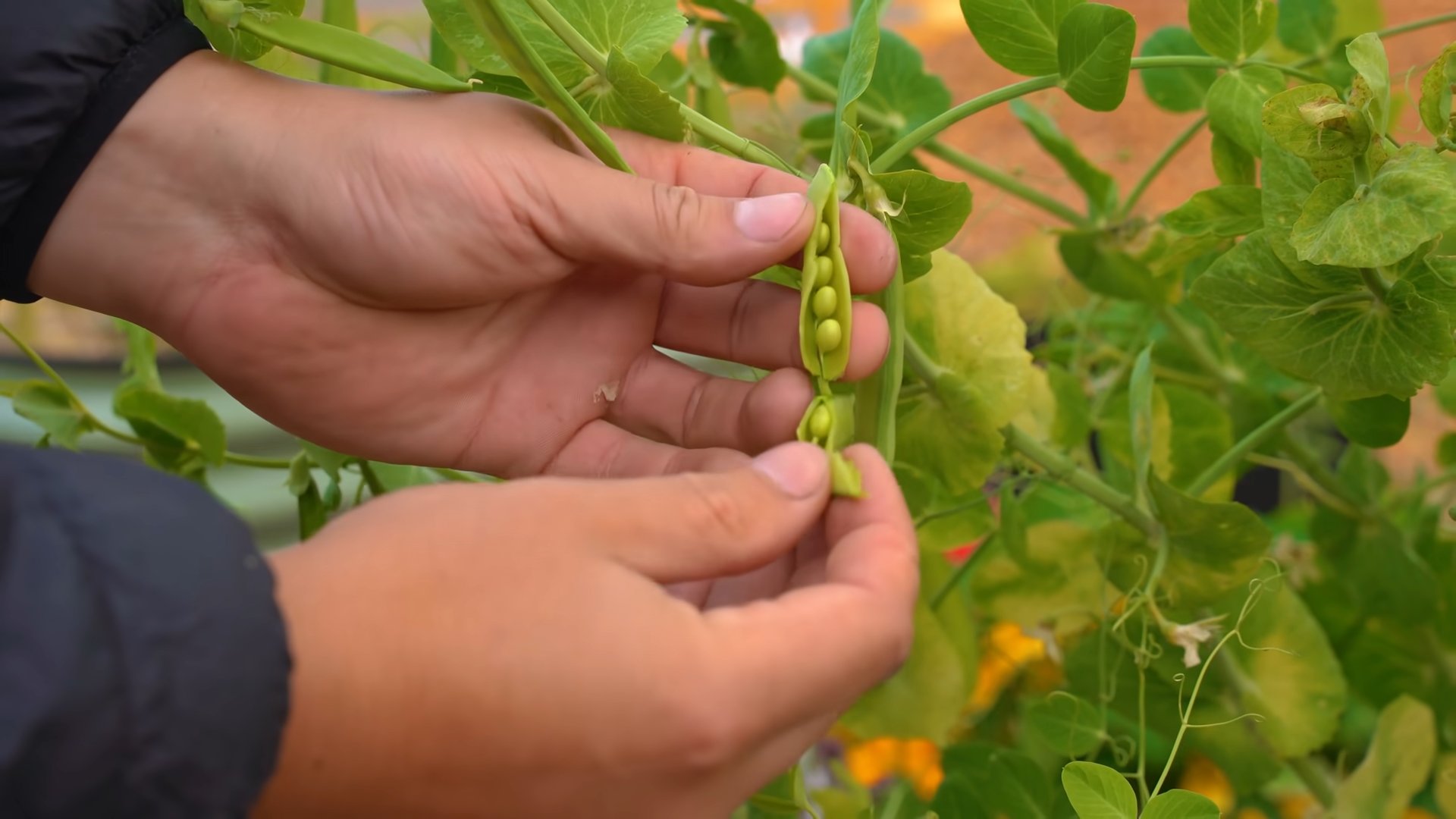
Growing Peas Indoors: A Comprehensive DIY Guide
Hey there, fellow gardening enthusiasts! Ever dreamt of enjoying fresh, sweet peas even when the weather outside is frightful? Well, dream no more! I’m going to walk you through the process of growing peas indoors, step-by-step. It’s easier than you might think, and the reward of homegrown peas in the middle of winter (or any time you want!) is totally worth it.
Choosing the Right Pea Variety
First things first, not all pea varieties are created equal when it comes to indoor growing. You’ll want to choose bush or dwarf varieties, as they stay compact and won’t require a massive trellis. Here are a few of my favorites:
* Little Marvel: A classic dwarf variety that produces sweet, flavorful peas. They typically reach about 2 feet tall.
* Tom Thumb: These are super compact, only growing to about 8 inches tall. Perfect for small spaces!
* Sugar Ann Snap Peas: A bush snap pea variety that’s known for its early yields and delicious, edible pods.
* Oregon Sugar Pod II: Another excellent snap pea option that’s relatively compact and produces abundant pods.
Gathering Your Supplies
Before we dive into planting, let’s make sure you have everything you need. This will save you time and frustration later on. Here’s your checklist:
* Pea Seeds: Obviously! Choose your preferred variety from the list above.
* Pots or Containers: Opt for containers that are at least 6-8 inches deep and wide. Good drainage is crucial.
* Potting Mix: Use a high-quality, well-draining potting mix. Avoid using garden soil, as it can compact and hinder drainage.
* Grow Lights (Optional but Recommended): Peas need plenty of light, especially indoors. A grow light will significantly improve your success rate.
* Trellis or Support System: Even dwarf varieties benefit from some support. Small trellises, bamboo stakes, or even twigs will work.
* Watering Can or Spray Bottle: For gentle watering.
* Seed Starting Tray (Optional): If you prefer to start your seeds indoors before transplanting.
Planting Your Pea Seeds
Now for the fun part! Let’s get those pea seeds in the soil.
1. Soak the Seeds (Optional): Soaking your pea seeds in water for 12-24 hours before planting can help speed up germination. I usually do this, but it’s not strictly necessary.
2. Fill Your Containers: Fill your pots or containers with potting mix, leaving about an inch of space at the top.
3. Sow the Seeds: Make small indentations in the soil, about 1 inch deep and 2 inches apart. Place one or two pea seeds in each indentation.
4. Cover the Seeds: Gently cover the seeds with potting mix and lightly pat down the soil.
5. Water Thoroughly: Water the soil gently but thoroughly until it’s evenly moist. Avoid overwatering, which can lead to rot.
6. Provide Light: If you’re using grow lights, position them about 6-12 inches above the soil surface. If you’re relying on natural light, place your containers in a sunny south-facing window.
Germination and Early Growth
This is where patience comes in. It usually takes about 7-14 days for pea seeds to germinate, depending on the temperature and moisture levels.
1. Maintain Moisture: Keep the soil consistently moist, but not soggy. Check the soil moisture daily and water as needed.
2. Provide Light: Ensure your seedlings are getting plenty of light. If using grow lights, keep them on for 14-16 hours per day. If using natural light, rotate your containers regularly to ensure even growth.
3. Thin Seedlings (If Necessary): If you planted two seeds per indentation and both germinate, thin out the weaker seedling, leaving the stronger one to grow.
4. Provide Support: Once your seedlings are a few inches tall, provide them with a trellis or support system. Gently guide the tendrils of the pea plants to the support.
Caring for Your Indoor Pea Plants
Once your pea plants are established, it’s important to provide them with the right care to ensure healthy growth and abundant yields.
1. Watering: Water your pea plants regularly, keeping the soil consistently moist. Avoid overwatering, which can lead to root rot. Check the soil moisture daily and water when the top inch of soil feels dry.
2. Fertilizing: Feed your pea plants with a balanced liquid fertilizer every 2-3 weeks. Follow the instructions on the fertilizer label. I like to use a fertilizer that’s specifically formulated for vegetables.
3. Light: Peas need at least 6-8 hours of direct sunlight per day. If you’re not using grow lights, place your containers in a sunny south-facing window. Rotate your containers regularly to ensure even growth.
4. Temperature: Peas prefer cool temperatures, ideally between 60-70°F (15-21°C). Avoid placing your plants near heat sources, such as radiators or vents.
5. Air Circulation: Good air circulation is important to prevent fungal diseases. Ensure your plants have adequate space between them and provide good ventilation in your growing area. A small fan can help with this.
6. Pest Control: Keep an eye out for common pests, such as aphids and spider mites. If you notice any pests, treat them with an insecticidal soap or neem oil.
Pollination (If Necessary)
Peas are self-pollinating, meaning they don’t require insects or wind to transfer pollen. However, indoor environments can sometimes hinder pollination.
1. Hand Pollination (Optional): If you’re concerned about pollination, you can hand-pollinate your pea plants. Use a small paintbrush to gently transfer pollen from the male parts (anthers) of the flower to the female part (pistil).
2. Shake the Plants (Optional): Gently shaking your pea plants can also help to release pollen and improve pollination.
Harvesting Your Peas
The moment you’ve been waiting for! Harvesting your peas is the most rewarding part of the process.
1. Timing: The timing of your harvest will depend on the variety of peas you’re growing. Snap peas are ready to harvest when the pods are plump and the peas inside are fully developed. Shelling peas are ready to harvest when the pods are firm and the peas inside are large and sweet.
2. Harvesting Technique: Gently pluck the pea pods from the plant, being careful not to damage the stems or leaves.
3. Regular Harvesting: Harvest your peas regularly to encourage continued production. The more you harvest, the more peas your plants will produce.
Troubleshooting Common Problems
Even with the best care, you might encounter some challenges along the way. Here are a few common problems and how to address them:
* Yellowing Leaves: This could be a sign of overwatering, underwatering, or nutrient deficiency. Adjust your watering schedule and fertilize your plants as needed.
* Leggy Growth: This is usually caused by insufficient light. Provide your plants with more light, either through grow lights or a sunnier location.
* Lack of Pods: This could be due to poor pollination, insufficient light, or nutrient deficiency. Try hand-pollinating your plants, providing more light, and fertilizing them with a balanced fertilizer.
* Pests: Keep an eye out for common pests, such as aphids and spider mites. Treat them with an insecticidal soap or neem oil.
Enjoying Your Homegrown Peas
Congratulations! You’ve successfully grown peas indoors. Now it’s time to enjoy the fruits (or rather, vegetables) of your labor.
* Eat Them Fresh: Freshly picked peas are incredibly sweet and delicious. Enjoy them straight from the pod, add them to salads, or use them as a garnish.
* Cook Them: Peas can be cooked in a variety of ways, such as steaming, boiling, or stir-frying. Add them to soups, stews, or pasta dishes.
* Freeze Them: If you have a surplus of peas, you can freeze them for later use. Blanch the peas in boiling water for 2-3 minutes, then transfer them to an ice bath to stop the cooking process. Drain the peas and freeze them in a single layer on a baking sheet. Once frozen, transfer them to a freezer bag or container.
Growing peas indoors is a rewarding experience that allows you to enjoy fresh, homegrown peas year-round. With a little bit of care and attention, you can have a thriving indoor pea garden. Happy gardening!
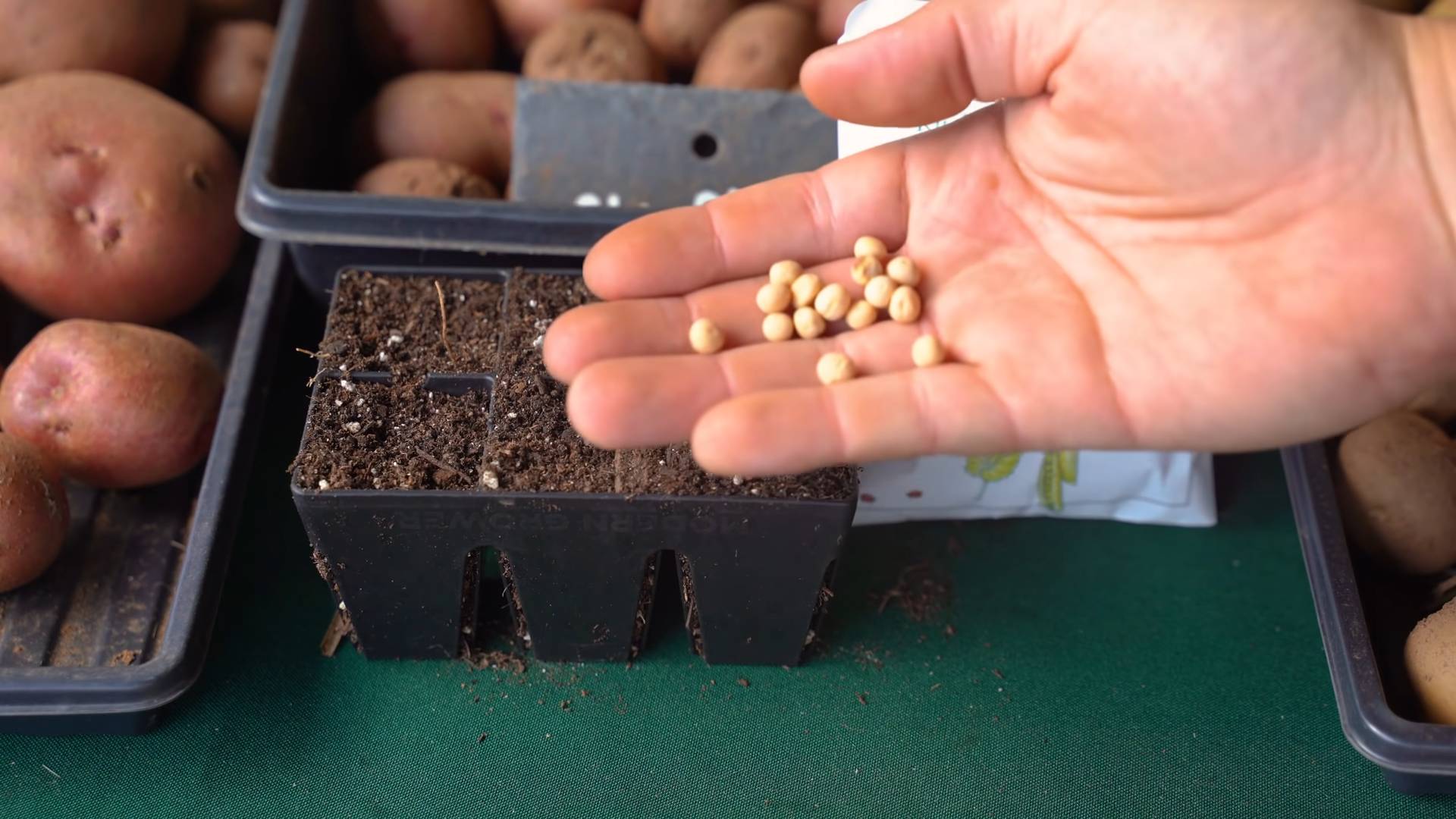
Conclusion
So, there you have it! Growing peas indoors is not only achievable, but it’s also a remarkably rewarding experience. Forget relying solely on fleeting spring weather or limited garden space. With this simple DIY trick, you can enjoy the sweet, tender taste of freshly grown peas year-round, right from the comfort of your home. Imagine adding vibrant, homegrown pea shoots to your salads in the dead of winter, or snapping sweet pea pods straight from the vine for a healthy snack. The possibilities are endless!
This method isn’t just about convenience; it’s about control. You dictate the environment, ensuring optimal growing conditions free from pests and unpredictable weather patterns. Plus, it’s a fantastic way to introduce children to the wonders of gardening and the satisfaction of growing their own food.
But don’t stop there! Experiment with different varieties of peas to discover your favorites. Try using different types of containers, from repurposed plastic tubs to aesthetically pleasing terracotta pots. Consider adding companion plants like basil or mint to your indoor pea garden to enhance flavor and deter pests naturally. You can even explore vertical gardening techniques to maximize space and create a stunning green wall.
Growing peas indoors is a gateway to a world of indoor gardening possibilities. It’s a chance to connect with nature, cultivate your own food, and add a touch of freshness to your home.
We wholeheartedly encourage you to give this DIY trick a try. It’s easier than you think, and the results are incredibly satisfying. Once you’ve harvested your first batch of homegrown peas, we’d love to hear about your experience! Share your photos, tips, and variations in the comments below. Let’s build a community of indoor pea growers and inspire others to embrace the joy of homegrown goodness. Don’t forget to tag us in your social media posts so we can see your amazing indoor pea gardens! Happy growing!
Frequently Asked Questions (FAQs)
Q: What kind of peas are best for growing indoors?
A: While many pea varieties can be grown indoors, bush or dwarf varieties are generally the most suitable. These varieties tend to be more compact and don’t require as much vertical space as climbing varieties. Popular choices include ‘Little Marvel,’ ‘Tom Thumb,’ ‘Sugar Ann,’ and ‘Snowbird.’ Snow peas and snap peas also do well indoors, providing both edible pods and delicious peas. Consider the size of your growing space when selecting a variety. If you have limited vertical space, stick to the shortest bush varieties. If you have more room, you can experiment with slightly taller varieties and provide them with support.
Q: What kind of light do indoor peas need?
A: Peas need plenty of light to thrive. Ideally, they should receive at least 6-8 hours of direct sunlight per day. A south-facing window is often the best option. However, if you don’t have access to sufficient natural light, you can supplement with artificial grow lights. Fluorescent or LED grow lights are excellent choices. Position the lights a few inches above the plants and keep them on for 12-16 hours per day. Observe your plants closely. If they are leggy and reaching for the light, they are not getting enough. Adjust the position of the lights or consider adding more light sources.
Q: What kind of soil should I use for growing peas indoors?
A: Peas prefer well-draining soil that is rich in organic matter. A good potting mix specifically formulated for vegetables is ideal. You can also create your own mix by combining equal parts of potting soil, compost, and perlite or vermiculite. Avoid using garden soil, as it can be too heavy and may contain pests or diseases. Ensure that your containers have drainage holes to prevent waterlogging. Waterlogged soil can lead to root rot, which can be fatal to your pea plants.
Q: How often should I water my indoor pea plants?
A: Water your pea plants regularly, keeping the soil consistently moist but not soggy. Check the soil moisture level daily by sticking your finger into the soil. If the top inch feels dry, it’s time to water. Water deeply, allowing the excess water to drain out of the drainage holes. Avoid overwatering, as this can lead to root rot. The frequency of watering will depend on factors such as the size of your container, the temperature, and the humidity. In general, you may need to water more frequently during warmer months or when the plants are actively growing.
Q: Do I need to fertilize my indoor pea plants?
A: Peas are relatively light feeders, but they will benefit from occasional fertilization. Use a balanced liquid fertilizer diluted to half strength. Fertilize every 2-3 weeks, starting when the plants are a few inches tall. Avoid over-fertilizing, as this can lead to excessive foliage growth and fewer peas. You can also amend the soil with compost or other organic matter to provide a slow-release source of nutrients.
Q: How long does it take for peas to grow indoors?
A: The time it takes for peas to grow indoors depends on the variety and growing conditions. Generally, you can expect to harvest your first peas within 60-70 days of planting. Pea shoots can be harvested much earlier, typically within 2-3 weeks. Keep in mind that indoor growing conditions may differ from outdoor conditions, so the growth rate may vary.
Q: How do I support my indoor pea plants?
A: While bush varieties are more compact, they may still benefit from some support, especially as they start to produce peas. You can use small stakes, trellises, or even tomato cages to provide support. For climbing varieties, a taller trellis or support structure is essential. Ensure that the support structure is sturdy enough to hold the weight of the plants and the peas.
Q: What are some common pests and diseases that affect indoor pea plants?
A: Common pests that can affect indoor pea plants include aphids, spider mites, and whiteflies. Regularly inspect your plants for signs of infestation. If you spot any pests, you can try washing them off with a strong stream of water or using insecticidal soap. Diseases that can affect indoor pea plants include powdery mildew and root rot. Ensure good air circulation to prevent powdery mildew. Avoid overwatering to prevent root rot.
Q: Can I grow peas indoors year-round?
A: Yes, you can grow peas indoors year-round, provided you have adequate light and temperature control. Peas prefer cooler temperatures, ideally between 60-70°F (15-21°C). Avoid placing your plants near heat sources, such as radiators or vents. With proper care, you can enjoy a continuous harvest of fresh peas throughout the year.
Q: How do I harvest peas indoors?
A: Harvest peas when the pods are plump and filled with peas. Snap peas should be harvested when the pods are still tender and crisp. Snow peas should be harvested when the pods are flat and the peas are just beginning to develop. Pea shoots can be harvested by snipping off the top few inches of the plant. Regular harvesting will encourage the plants to produce more peas.


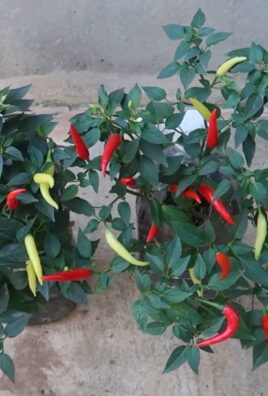
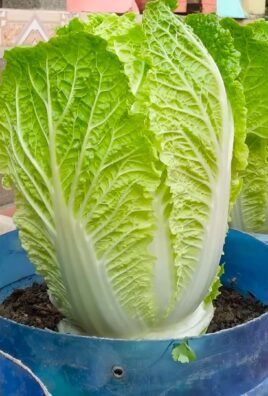
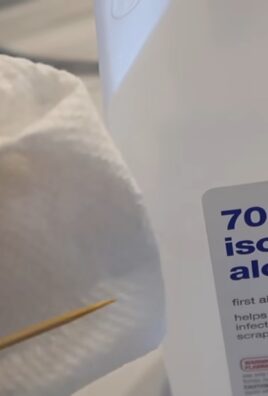
Leave a Comment